Looking for suitable tapioca flour substitutes? This complete guide covers the 9 best alternative substitutions and the pros and cons of using them.
You may already have a substitute in your pantry, so check my suggested uses for each flour swap to ensure that your recipe turns out perfectly.
Looking for a pantry-staple tapioca flour substitute? Use cornstarch.
It is the best substitution for tapioca starch for all four uses: as a thickening agent, pudding base, egg substitute, or gluten-free baking substitute.
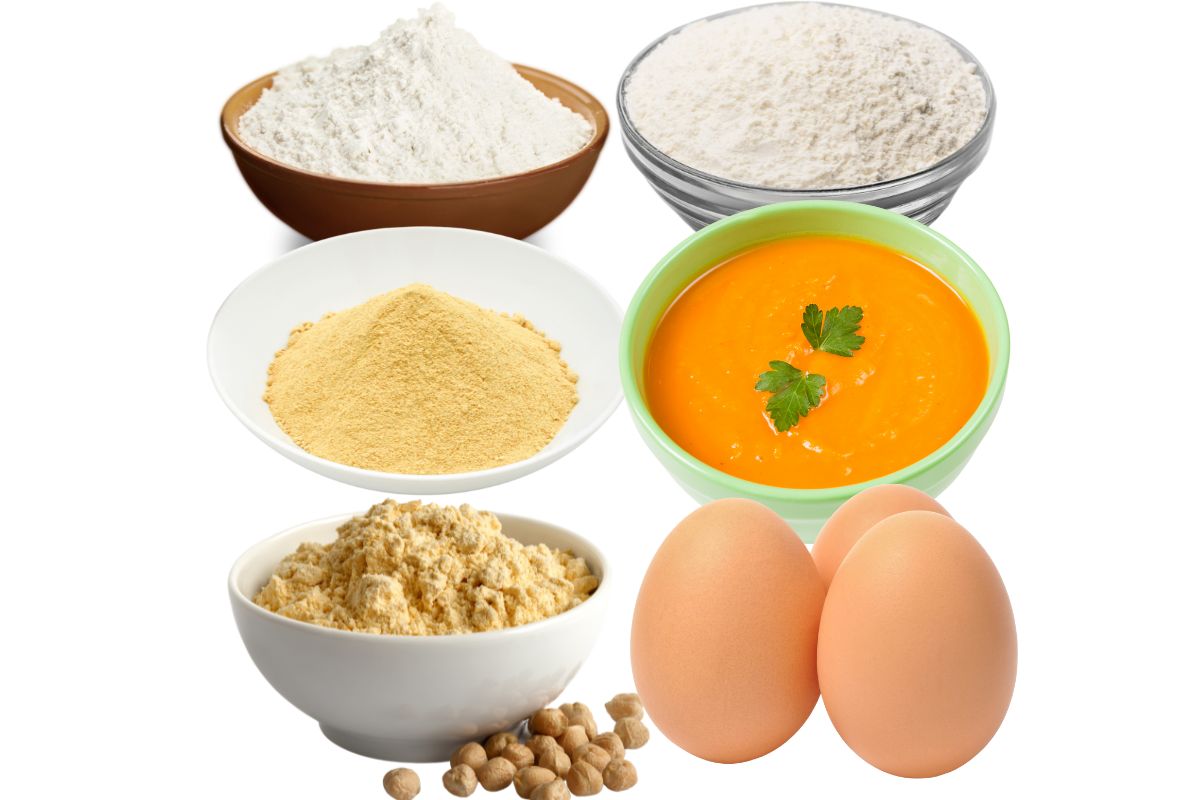
What is tapioca flour?
Tapioca starch and tapioca flour are the same thing and can be used interchangeably.
This ingredient is made from the crushed pulp of the cassava plant, which is different from cassava flour which uses the whole root, not just the pulp.
To make tapioca starch, cassava roots are peeled, washed, chopped, shredded, spun, and washed again until only pure starch and water remain.
The resulting product is a fine, white powder that has a neutral taste and is known for adding a smooth, chewy texture when baked or a crispy texture when cooked or fried.
Tapioca starch is typically gluten-free, paleo-approved, and vegan. It’s a great option for those with potato or corn dietary restrictions.
What is tapioca starch used for?
When it comes to plant-based cooking, tapioca flour is a versatile ingredient that can be used in a variety of ways.
I use tapioca flour in my kitchen in the following 4 ways depending on what I have in mind.
1. Thickening agent
One of the most common uses of tapioca flour in cooking is as a thickening agent. It is perfect for thickening sauces, gravies, and soups.
2. Pudding base
People also rely on its thickening power to make pudding or custard-like recipes.
3. Egg substitute
Tapioca flour is a popular egg substitute in vegan recipes, especially for pancakes, crepes, waffles, and such. Or as a binder to veggie patties, burgers, or vegetable balls.
4. Gluten-free baking
It is quite popular in gluten-free baking as it helps to raise the starch content of the gluten-free flour mix to be closer to all-purpose flour.
9 best tapioca flour substitutes
If you are in the middle of a recipe and realize you are out of tapioca flour, do not panic.
There are several other ingredients you can use as a substitute. These substitutes may be sitting in your pantry right now.
Here are the 9 best substitutes for tapioca flour:
1. Cornstarch

Cornstarch is the best substitute as it works in all 4 cases I explained above.
It is perfect as a thickener (like in our vegan onion gravy recipe), as a pudding base (vegan custard tart, or vegan panna cotta), as an egg substitute (beet burger, or mushroom meatballs), or as a gluten-free flour (gluten-free pizza crust)
PROS:
- Cornstarch is available in almost all stores. It is a widely distributed starch product and cheaper than the others.
- It is a stronger thickener than tapioca starch. The thickening power of starches depends on their amylose-content. Tapioca starch has 15-18%, while corn starch has a relatively high one, 25-30%. If you want to substitute corn starch for tapioca, you need less to reach the same result.
CONS:
- It needs higher heat to be activated, usually at the boiling point. As soon as it thickens, you need to take it off the heat, as over-mixing and over-heating will deflate it and the sauce becomes runny again.
- Cornstarch does not do well with high acidic liquids like tomato, citrus fruit, wine, or vinegar. It can lose its thickening power. So watch out if you want to use them to thicken pie filling since not all fruit responds the way you expect them to.
- Tapioca starch turns opaque when heated, while corn starch remains somewhat cloudy.
2. Arrowroot starch
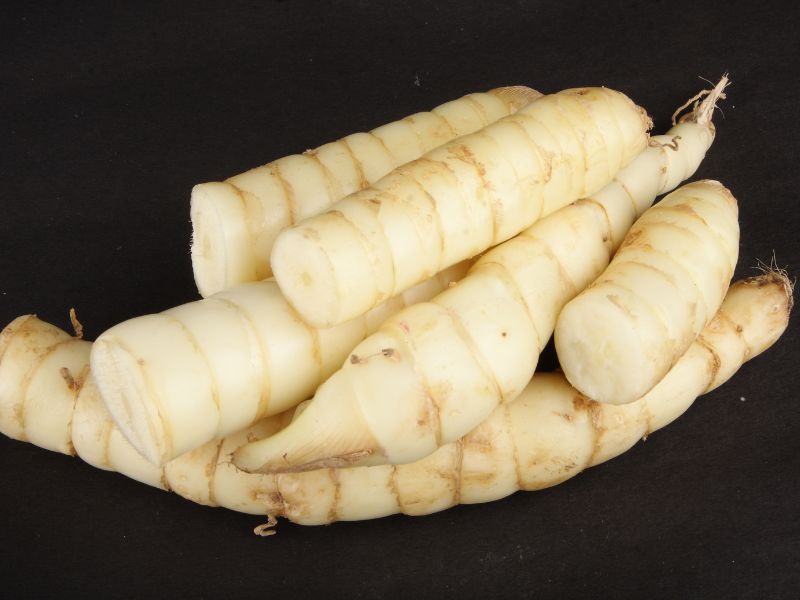
Arrowroot starch can also be a good substitution for tapioca flour.
It ticks 3 of the 4 boxes: #1 as a thickener, #2 as a pudding base, and #4 as part of a gluten-free flour mix.
However, I have never ever seen a vegan recipe where it was used as an egg substitute for pancakes, crepes, and similar dishes.
PROS:
- Its thickening power is quite close to tapioca flour having 20% amylose-content, while tapioca has 15-18%. It means you can substitute arrowroot for tapioca starch 1:1 ratio.
- It also needs lower heat same as tapioca flour.
- It is also opaque just like tapioca flour when it is heated.
CONS:
- This starch is even less common to find in supermarkets than tapioca flour.
3. Potato starch
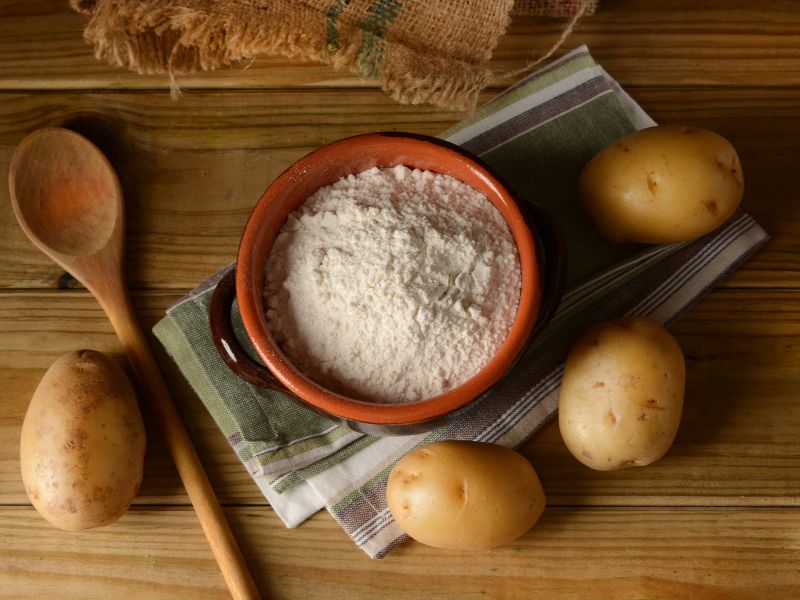
Potato starch can be another substitute for tapioca flour, as they are quite similar to one another.
It ticks 3 of the 4 boxes: #1 as a thickener, #2 as a pudding base, and #4 as part of a gluten-free flour mix (gluten-free sweet potato gnocchi).
However, I have never ever seen a vegan recipe where it was used as an egg substitute for pancakes, crepes, and similar dishes.
PROS:
- Its thickening power is quite close to tapioca flour having 20% amylose-content, while tapioca has 15-18%. It means you can substitute potato for tapioca starch 1:1 ratio.
- It also needs lower heat same as tapioca flour.
- It is also opaque just like tapioca flour when it is heated.
4. All-purpose flour
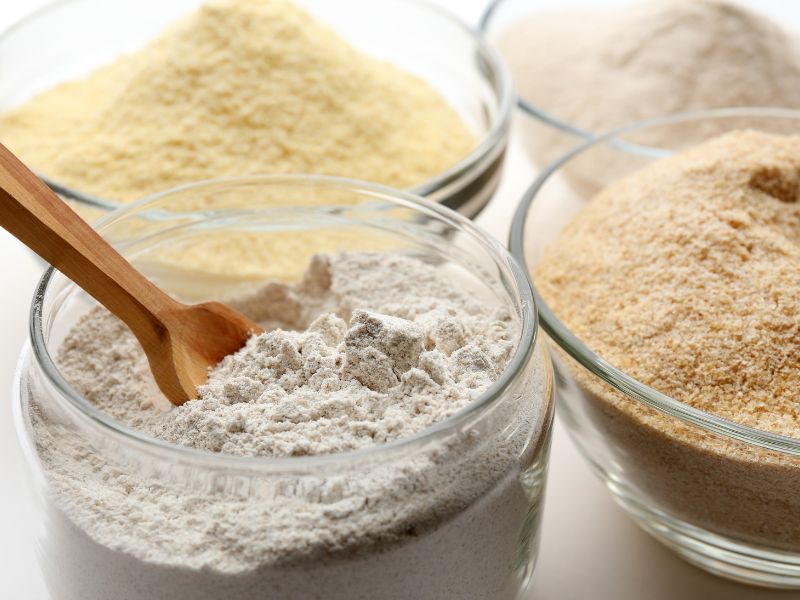
I have to eat gluten-free, and wheat flour has been a good substitute to thicken soups, sauces, or stews before, as well as the go-to flour to make baked goods.
Sadly, wheat is not gluten-free, so it is not an alternative for someone who has celiac.
It ticks only 2 of the 4 boxes: #1 as a thickener and #3 as an egg substitute.
PROS:
- All-purpose flours are a go-to thickening agent for those who don’t have to eat gluten-free. It is cheap, available in all stores, and easy to work with.
- It has a high 25% amylose-content, so its thickening power is closer to cornstarch than to tapioca flour. If a recipe calls for tapioca flour as a thickener, you need half of the amount of all-purpose flour.
CONS:
- It is not really a suitable substitute for tapioca flour when it comes to making puddings, custards, or fruit sauces. If you were to use it to make puddings, you will end up with a very floury taste.
- Wheat flour can be used to bind veggies patties, burgers, and balls together instead of tapioca flour and eggs.
- It is also not acceptable in a gluten-free diet.
5. Gluten-free flours

If you need to eat gluten-free, you have an option to thicken sauces with gluten-free flour blends instead of tapioca flour.
I have a definitive list of more than 90 gluten-free flours, which means there are plenty to choose from. The most common ones are oat flour, rice flour, buckwheat flour, millet flour, and almond flour.
It only ticks 3 of the 4 boxes: #1 as a thickener (vegan mushroom pasta), #3 as an egg substitute (vegan frittata, vegan breakfast casserole), and #4 in gluten-free baking
PROS:
- If you have a branded GF flour mix, you can use them as a thickener. These flour mixes do have some type of starch in them which helps the substitution easier.
- Out of all stand-alone flours, rice flour would be the easiest, cheapest, and closest thickener of soups.
- Chickpea flour is beloved to make an eggy batter for omelets, frittata, and similar recipes.
CONS:
- None of the gluten-free flours are suitable substitutes for tapioca flour when it comes to making puddings, custards, or fruit sauces.
6. Agar agar, Gelatin, and Pectin
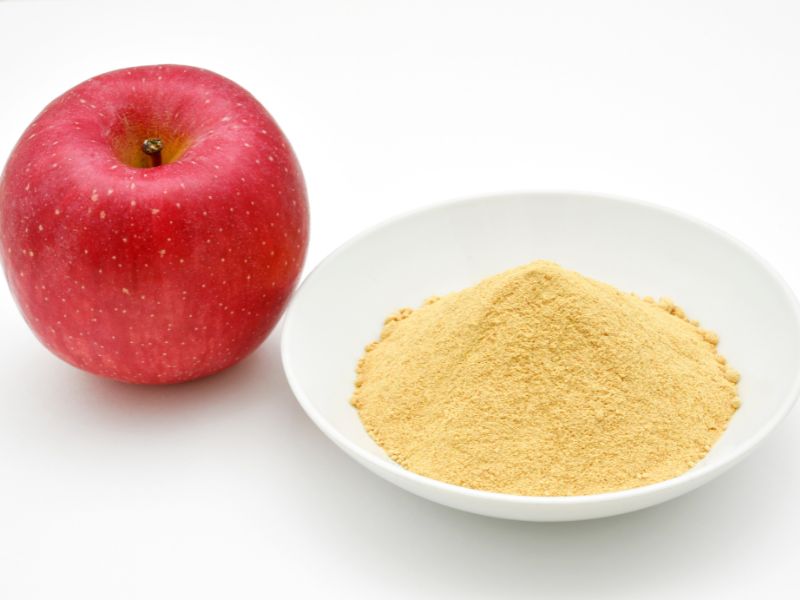
All three are very powerful gelling agents so they are not an ideal substitute for tapioca flour in many cases.
Gelatin is an animal-based option, while agar agar is made of red algae and is widely used in vegan recipes.
Pectin comes from fruits typically apples. If you want to use them as an alternative to tapioca flour here are the pros and cons you need to consider.
It ticks only 1 of the 4 boxes: #2 – a pudding base.
PROS:
- They are a suitable alternative for tapioca flour to make puddings or custards or similar dishes. However, they are powerful thickeners, so you need only a very small amount.
- They are perfect to make jams or jellies like this dried cranberry jelly.
CONS:
- What was a pro is also a con. They are too powerful, so they are not really suitable for thickening soups, stews, or sauces.
- While making vegan cheese can be challenging, tapioca flour is used to make stretchy gooey consistency like vegan mozzarella, while agar agar is perfect for sliceable ones like this pistachio nut cheese.
7. Xanthan gum and Guar gum
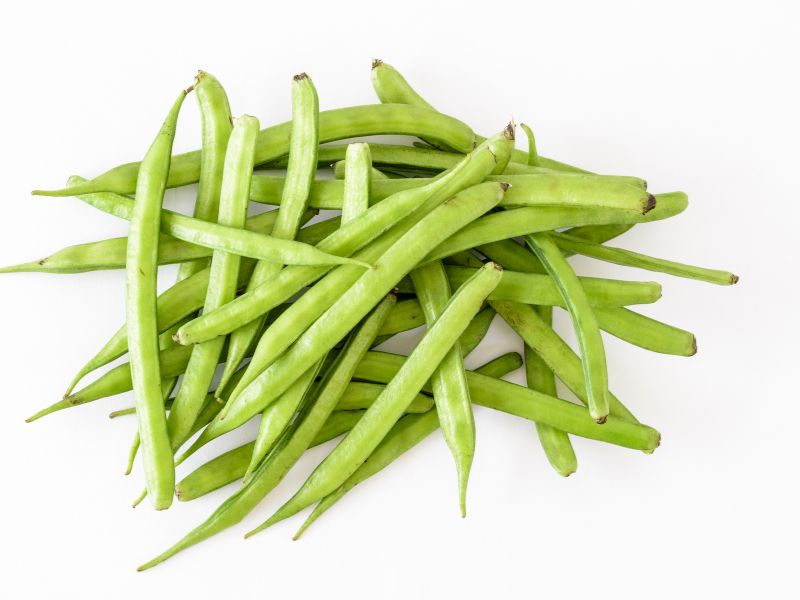
These are both quite powerful thickening agents so they are usually not an ideal tapioca starch substitute.
They have gained popularity with gluten-free baking in place of or in combination with other gluten-free flours.
Both xanthan gum and guar gum tick 2 of the 4 boxes: #1 as a thickener and #4 as part of a gluten-free flour mix.
PROS:
- The best way to use them as a tapioca flour alternative is in gluten-free baking. Since you can’t use all-purpose wheat flour, gluten-free flour mixes often use tapioca or corn starch in combination with xanthan gum or guar gum. It makes for a gooey, chewy texture for gluten-free pizza.
CONS:
- They are too powerful, so they are not really suitable to thicken soups, stews, or sauces.
- They are not commonly available in stores. So you might need to search a bit longer. They can definitely buy xanthan gum and guar gum online.
- Even though you need small amounts they are sold in larger quantities, so they can be a pricey investment for some.
8. Collagen (like eggs)
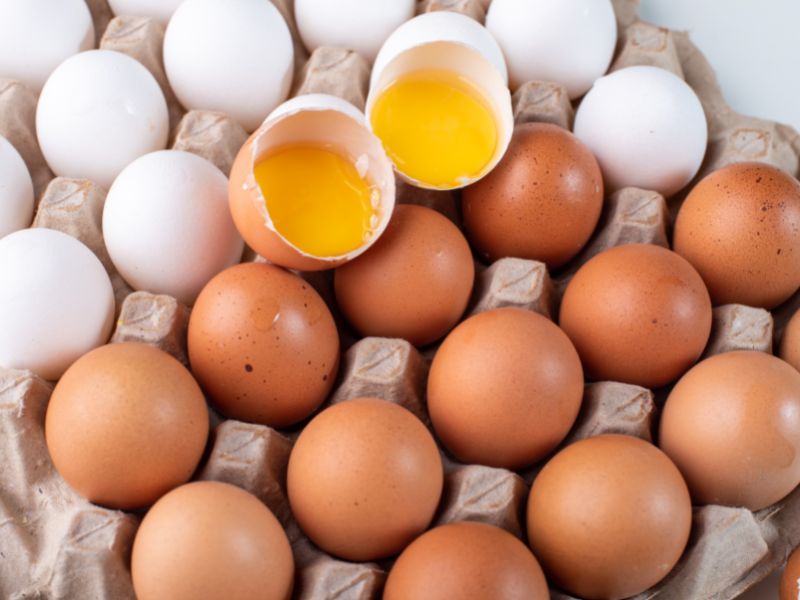
Eggs are quite a common ingredient to use as a thickening agent.
To avoid them I make crepes, pancakes, gluten-free pie crust, and gluten-free pop tarts with tapioca flour.
So it is a bit of the other way around. If you don’t need to avoid eggs, they are great alternatives to thicken certain dishes.
PROS:
- Eggs are commonly used to make pudding and custard-like dishes. They are also used to make veggie patties, burgers, and meatballs bind together.
- Eggs are widely available in stores.
CONS:
- Not allergy-friendly. It is not suitable for people following a vegan or plant-based diet as well as for those who have an egg allergy of any type.
- Eggs are not really suitable to thicken soups, sauces, or stews as it is hard to navigate at what heat you make scrambled eggs instead of thickening your sauce.
9. High-starch vegetables
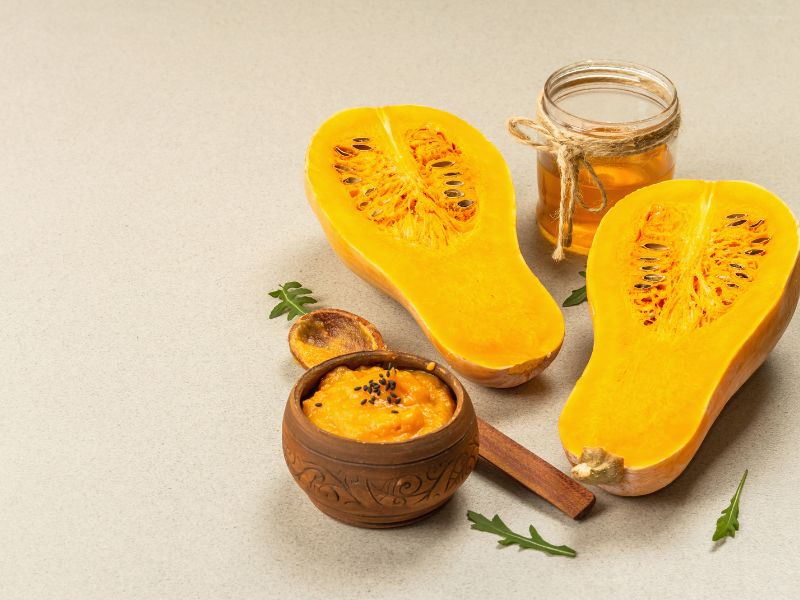
There are some vegetables with a high natural starch content that can help you replace tapioca flour in some cases.
They usually tick only 2 of the 4 boxes: #1 as a thickener and #3 as egg substitutes.
Here are the best high starch vegetables to use instead of tapioca flour:
- Potatoes: They are one of the best tapioca flour substitutes when it comes to veggie alternatives. I use them all the time to thicken soups like this cream of spinach soup.
- Sweet potatoes, butternut squash, or pumpkin: I use them to make vegan chocolate pudding or sweet potato brownies
- Chickpeas, lentils, and beans: You can also thicken soups, stews, and sauces with pureed cooked legumes. I use chickpeas to make a thick hidden vegetable sauce. Have you heard of black bean brownies or chickpea blondies? You can skip starches or flours altogether to make them.
- Tomato paste: It is perfect for thickening tomato-based sauces, stews, and soups without any starch. Not to mention it will enhance the tomato flavor.
FAQ
Yes, it is the same. Tapioca is a very fine powder-like flour that is actually pure starch, hence the two different names and the misunderstanding. Whichever is on the packaging, you can be sure you are using the correct ingredient. Due to this confusion brands like Bob Red Mill’s have started labeling their products to contain both names.
No, it is not the same. Both flours are made of cassava root so that much is true. However, the major difference is that tapioca flour is pure 100% starch, while cassava flour has actually some fiber. Here is a newspaper article on how cassava flour is manufactured. It starts the same with washing, peeling, and finely chopping the cassava root. But then to make tapioca flour the starch and the fiber are separated, while to make cassava flour, the finely chopped root is dried and then milled into flour.
More substitution guides
- Complete list of tahini substitutes
- The best 5 soy sauce substitutes
- Complete list of breadcrumbs substitutes
- Guide to honey substitutes
- The best oyster mushroom substitutes
- 10 wraps for spring rolls



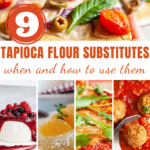
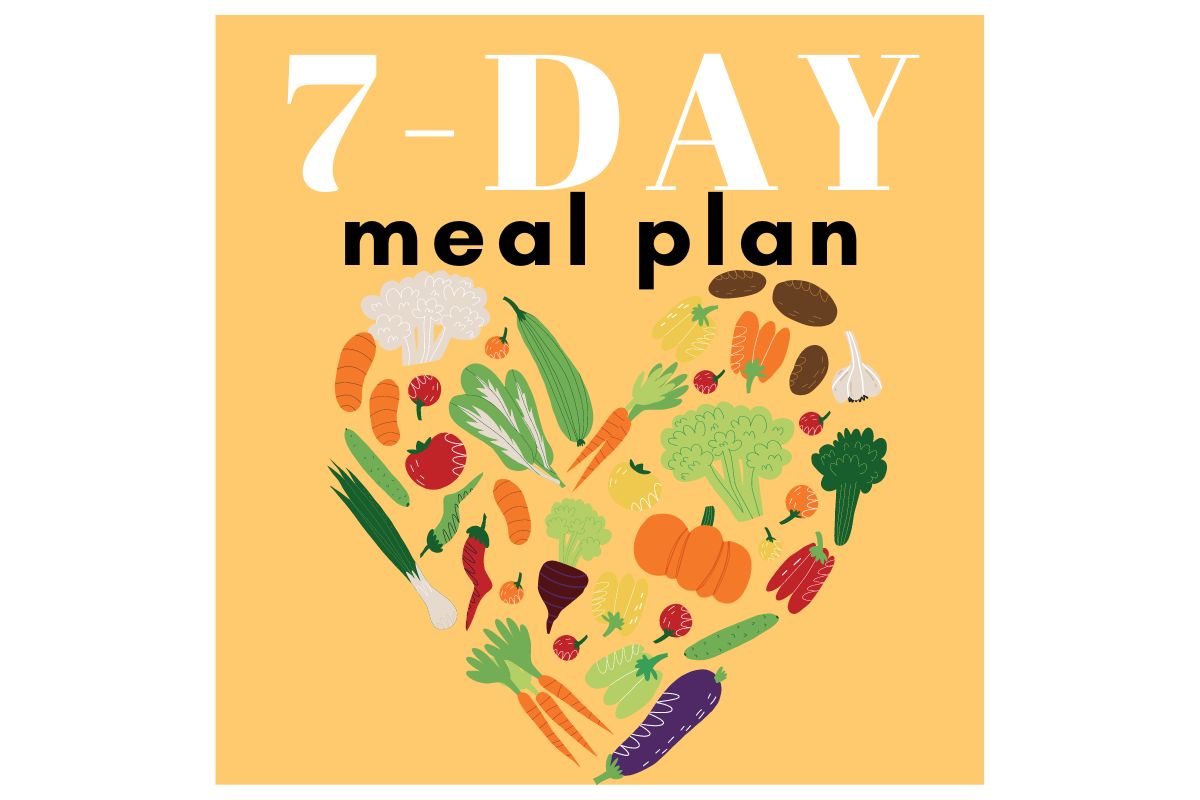
Leave a comment